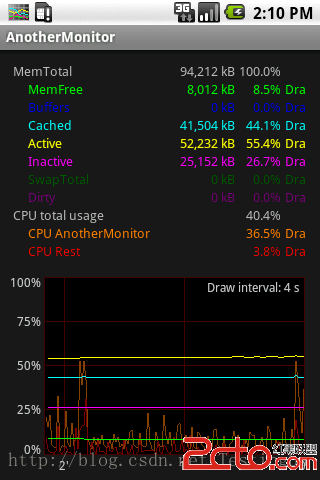編輯:關於Android編程
merge結合include優化android布局,效果不知道,個人感覺使用上也有很大的局限,不過還是了解一下,記錄下來。
布局文件都要有根節點,但android中的布局嵌套過多會造成性能問題,於是在使用include嵌套的時候我們可以使用merge作為根節點,這樣可以減少布局嵌套,提高顯示速率。
<?xml version="1.0" encoding="utf-8"?> <merge xmlns:android="http://schemas.android.com/apk/res/android" > <TextView android:layout_width="wrap_content" android:layout_height="wrap_content" android:text="張三" /> <TextView android:layout_width="wrap_content" android:layout_height="wrap_content" android:text="李四" /> <TextView android:layout_width="wrap_content" android:layout_height="wrap_content" android:text="王五" /> </merge>
上面的界面在顯示的時候會自動嵌套到下面的文件中。
<LinearLayout xmlns:android="http://schemas.android.com/apk/res/android" xmlns:tools="http://schemas.android.com/tools" android:layout_width="match_parent" android:layout_height="match_parent" android:orientation="horizontal" tools:context="com.example.viewstub.MainActivity" > <include layout="@layout/top"/> <TextView android:layout_width="wrap_content" android:layout_height="wrap_content" android:text="@string/hello_world" /> <Button android:id="@+id/toggle" android:layout_width="wrap_content" android:layout_height="wrap_content" android:onClick="onClick" android:text="顯示/隱藏" /> <ViewStub android:id="@+id/vs" android:layout_margin="50dp" android:layout_width="match_parent" android:layout_height="match_parent" android:inflatedId="@+id/inflated_id" android:layout="@layout/view_stub_layout" /> </LinearLayout>
我為什麼說這個局限性比較大呢?因為merge中的空間顯示的使用會采用主布局文件的方式來顯示,比如我這裡主布局是linearlayout且是水平排列,那麼merge中的元素顯示出來之後也是水平排列,可是我如果想讓merge中的元素垂直排列呢?抱歉,做不到。
原文鏈接:http://blog.csdn.net/u012702547/article/details/47133647
以上就是本文的全部內容,希望對大家學習Android軟件編程有所幫助。
 Android draw9patch 圖片制作與使用詳解
Android draw9patch 圖片制作與使用詳解
Android draw9patch 圖片制作與使用理解一下4句話: 上邊 決定左右拉升不變形 左邊 決定上下拉升不變形 右邊 設置內容高度區域 下邊 設置內容寬
 Android輸入框添加emoje表情圖標的實現代碼
Android輸入框添加emoje表情圖標的實現代碼
前言再次寫聊天的時候才發現,代碼積累是一件非常重要的事情,就如這篇博客的意圖其實就是代碼積累的目的,其實沒什麼難度,但是一件很瑣碎的事情真的也需要時間去完成和調試,所以,
 Android客戶端性能參數監控
Android客戶端性能參數監控
背景: 在做android客戶端測試的時候,有時候需要監控cpu/mem/電量消耗/界面加載時間/流量等等指標。於是俺們就上下求索,網友告訴我
 Android開發之activity的生命周期詳解
Android開發之activity的生命周期詳解
本文實例講述了Android activity的生命周期。分享給大家供大家參考,具體如下:activity類處於android.app包中,繼承體系如下:1.Java.l